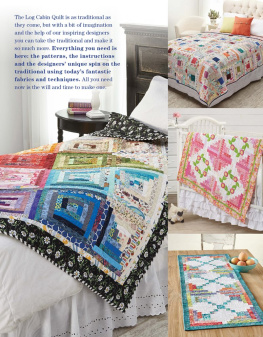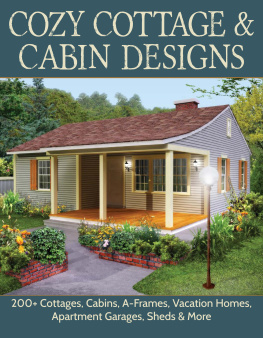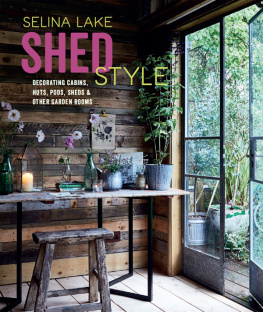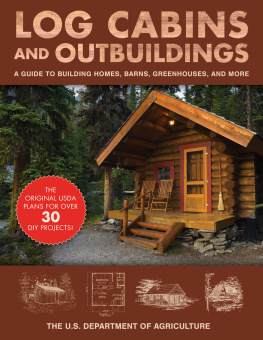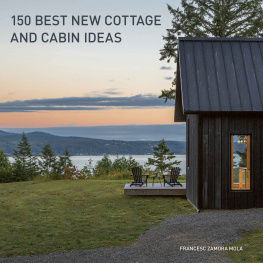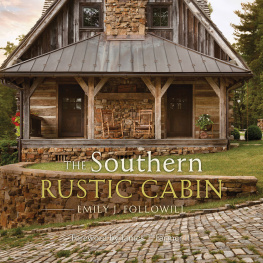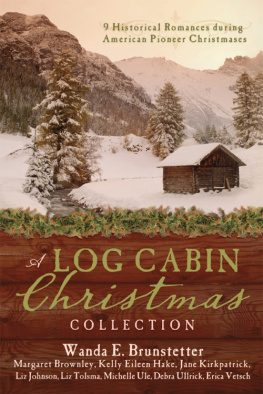HOW TO BUILD CABINS,
LODGES, AND BUNGALOWS
HOW TO BUILD
CABINS, LODGES
& BUNGALOWS
COMPLETE MANUAL OF CONSTRUCTING,
DECORATING, AND FURNISHING HOMES
FOR RECREATION OR PROFIT
Editors of Popular Science Monthly

Skyhorse Publishing
Copyright 2014 by Skyhorse Publishing
All Rights Reserved. No part of this book may be reproduced in any manner without the express written consent of the publisher, except in the case of brief excerpts in critical reviews or articles. All inquiries should be addressed to Skyhorse Publishing, 307 West 36th Street, 11th Floor, New York, NY 10018.
Skyhorse Publishing books may be purchased in bulk at special discounts for sales promotion, corporate gifts, fund-raising, or educational purposes. Special editions can also be created to specifications. For details, contact the Special Sales Department, Skyhorse Publishing, 307 West 36th Street, 11th Floor, New York,
NY 10018 or info@skyhorsepublishing.com.
Skyhorse and Skyhorse Publishing are registered trademarks of Skyhorse Publishing, Inc., a Delaware corporation.
www.skyhorsepublishing.com
10 9 8 7 6 5 4 3 2 1
eISBN: 978-1-62873-882-7
Library of Congress Cataloging-in-Publication Data is available on file.
ISBN: 978-1-62636-428-8
Printed in the United States of America
INTRODUCTION
N OTHING could be more American than the simple cabin. Not many generations ago, it was the backbone of American life, the headquarters of that important unit, the home. It provided shelter, protection, and a foundation upon which to build a great empire. The pioneer cabin was, in other words, a necessity.
Today a cabin likewise can be a necessity. Disregarding the cabins that still are used as permanent homes in some sections, there remain the so-called recreational cabins and their near relatives, the hunting and fishing lodges and summer cottages and bungalows. In some respects these are recreational luxuries. But to the owner whose normal activities make it impossible for him to lead the leisurely life of the cabin owner of two or three hundred years ago, a vacation cabin is a genuine asset. Also a cabin can be a real health investment. If you doubt this, try erecting one with your own hands, and note how quickly indigestion or nervousness disappear. You will find that you never had so much fun in your life. Moreover, the fun of spending a few days or weeks now and then in your cabin is something that can be enjoyed through many years. A cabin and the land on which it stands may represent an investment of a few hundred dollars. Over a period of a few years, that will be returned to you in many ways, not the least of which is the saving of actual money that would have been spent on other forms of vacation activities. Suitable cabin sites, near streams or lakes or in the mountains, can be bought cheaply. A fraction of an acre is sufficient. If you live near a National Park, the United States Government will let you erect a cabin on a delightful spot, for a fee of a few dollars a year. Similar summer-home sites can be obtained in various state parks.
If you do not want to build a cabin or lodge for yourself, perhaps you can find profit and pleasure in erecting such structures for others. It is not every man who can find time to construct his own vacation home, so he must pay some one else to do it. That some one else may as well be you.
It is the purpose of this book to set forth a number of ideas that will be helpful to the vacation-home builder. An attempt has been made to give information of a fundamental nature. During the actual building of a cabin or similar structure, unforeseen difficulties will arise, which must be solved on the spot. That is true of any type of building, particularly where the builder is not a contractor of long experience. Although numerous floor plans and other details of design are illustrated, there is no necessity to cling doggedly to them. The creation of a cabin is a relatively simple matter, and one that permits much flexibility both in design and construction.
It is desired to express appreciation to the various government organizations, lumber associations, manufacturers and others for their invaluable assistance in providing some of the information and illustrations used in this book.
TABLE OF CONTENTS
HOW TO BUILD CABINS,
LODGES, AND BUNGALOWS
HOW TO BUILD CABINS,
LODGES, AND BUNGALOWS
CHAPTER I
THE CABIN MOVEMENT
T HE word cabin will be used throughout this book to designate a simple structure primarily Intended for recreational purposes and part-time occupancy. It will be one story high, in most cases; will consist of one, or at most three or four, rooms; seldom will have a foundation other than a few stone or concrete piers, and will be capable of being built by the amateur. A cabin will be considered as having a number of relatives, structures whose design and construction are fundamentally alike, which are neither elaborate nor expensive, and which can be built by anyone.
First and most important is the log cabin. Because the log house is so firmly rooted in American history, it will be a long time before, in the mind of the average American, any other structure can replace it as a symbol of primitive comfort. The person who conceives the idea of building a summer or vacation home invariably thinks first of a log cabin, and usually does everything within his power to obtain that type in preference to any other. Unfortunately, the scarcity of logs and cost of labor in some sections make it necessary to choose a substitute. Also, the pioneer who knows all about log-cabin building from boyhood experience cannot be found in every home or community, and the novice is hesitant about tackling anything that looks as formidable as building a house of logs.
In reality, the erection of a log cabin is not difficult, and need not be costly. When it is properly put up, the builder has something that will last for years, perhaps for generations. Considerable space is given in this book to log cabins. This is primarily because the log structure can be used as a basis for so many other types. For instance, there is on the market a log siding or weatherboarding that permits the construction of faithful imitations of log houses. So if real logs are not available, the vacation cabin can be a wooden framework covered with this type of material, without losing much of the charm of a real log house.

Substantial cottage, showing the best manner of making corner joints. Casement window opens out flat against the wall
Log siding, usually made of pine or redwood, consists of interlocking boards so milled that their outer surfaces are curved, like sections ripped from real logs. Such boards lend themselves to a wide variety of uses. They can be employed outside to simulate logs laid horizontally or vertically, and on the inside for creating distinctive wall surfaces. Log siding can be stained, painted, varnished, or left to weather naturally. It will not decay, either because of inherent properties or because of treatment given it during manufacture. A modernized log cabin consists of a framework of 2 by 4s and similar sawn timbers, covered outside and perhaps inside with log siding. This siding is made in various widths, so that it can be applied in random fashion to give still more realistic imitations of log walls.



